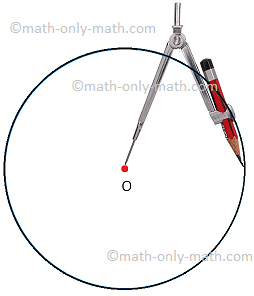Worksheet on L.C.M. of Polynomials
Practice the worksheet on L.C.M. of polynomials. The questions are based on finding the lowest common multiple of two or more polynomials.
We know, to find the lowest common multiple (L.C.M.) of two or more than two polynomials is the polynomial of lowest measures (or dimensions) which is divisible by each of the polynomials without remainder.
For example:The lowest common multiple of 3m2 + 9mn, 2m3 – 18mn2 and m3 + 6m2n + 9mn2It will be easy to pick out the common multiples if the polynomials are arranged as follows;
3m2 + 9mn = 3m(m + 3n); [taking the common factor 3m from both the terms].
2m3 – 18mn2 = 2m(m + 3n) (m - 3n); [taking the common factor 2m from both the terms and then factor using the formula of a2 – b2].
m3 + 6m2n + 9mn2 = m(m + 3n)2; [taking the common factor m from each term and then factor using the formula of (a + b)2]
Therefore the L.C.M. of 3m2 + 9mn, 2m3 – 18mn2 and m3 + 6m2n + 9mn2 = 6m(m + 3n)2 (m - 3n).
1. Find the lowest common multiple (L.C.M.) of the two polynomials:
(i) m and m2 + m(ii) n2 and n2 – 3n
(iii) 3k2 and 4k2 + 8k
(iv) 21p3 and 7p2(p + 1)
(v) p2 – 1 and p2 + p
(vi) x2 + xy and y2 + xy
(vii) 4p2q – q and 2p2 + p
(viii) 6k2 – 2k and 9k2 – 3k
(ix) a2 + 2b and a2 + 3a + 2
(x) d2 – 3d + 2 and d2 - 1
2. Find the lowest common multiple (L.C.M.) of the three polynomials:
(i) a2 – a – 6, a2 + a – 2 and a2 – 4a + 3(ii) 3n2 – n – 14, 3n2 – 13n + 14 and n2 - 4
(iii) (2x^2 – 3xy)2, (4x – 6y)3 and 8x3 – 27y3
(iv) a2 + a – 20, a2 – 10a + 24 and a2 – a - 30
(v) a4 + a2b2 + b4, a3b + b4 and (a3 – ab)3
Answers for the worksheet on L.C.M. of polynomials are given below to check the exact answers of the above questions.
Answers:
1. (i) m(1 + m)
(ii) n2(n – 3)(iii) 12k2(k + 2)
(iv) 21p3(p + 1)
(v) p(p + 1) (p – 1)
(vi) xy(x + y)
(vii) pq(2p + 1) (2p – 1)
(viii) 6k(3k – 1)
(ix) a(a + 1) (a + 2)
(x) (d + 1) (d – 1) (d – 2)
2. (i) (a - 3) (a – 1) (a + 2)
(ii) (n + 2) (n – 2) (3n – 7)
(iii) 8x2(2x – 3y)2 (8x3 – 27y3)(iv) (a + 5) (a – 4) (a – 6)
(v) a3b(a6 – b6) (a – b)2
8th Grade Math Practice
From Worksheet on L.C.M. of Polynomials to HOME PAGE
Didn't find what you were looking for? Or want to know more information about Math Only Math. Use this Google Search to find what you need.
Recent Articles
-
Dividing 3-Digit by 1-Digit Number | Long Division |Worksheet Answer
Apr 24, 24 03:46 PM
Dividing 3-Digit by 1-Digit Numbers are discussed here step-by-step. How to divide 3-digit numbers by single-digit numbers? Let us follow the examples to learn to divide 3-digit number by one-digit nu… -
Symmetrical Shapes | One, Two, Three, Four & Many-line Symmetry
Apr 24, 24 03:45 PM
Symmetrical shapes are discussed here in this topic. Any object or shape which can be cut in two equal halves in such a way that both the parts are exactly the same is called symmetrical. The line whi… -
Mental Math on Geometrical Shapes | Geometry Worksheets| Answer
Apr 24, 24 03:35 PM
In mental math on geometrical shapes we will solve different type of problems on simple closed curves, polygons, basic geometrical concepts, perpendicular lines, parallel lines, circle, terms relates… -
Circle Math | Terms Related to the Circle | Symbol of Circle O | Math
Apr 24, 24 02:57 PM
In circle math the terms related to the circle are discussed here. A circle is such a closed curve whose every point is equidistant from a fixed point called its centre. The symbol of circle is O. We… -
Fundamental Geometrical Concepts | Point | Line | Properties of Lines
Apr 24, 24 12:38 PM
The fundamental geometrical concepts depend on three basic concepts — point, line and plane. The terms cannot be precisely defined. However, the meanings of these terms are explained through examples.




